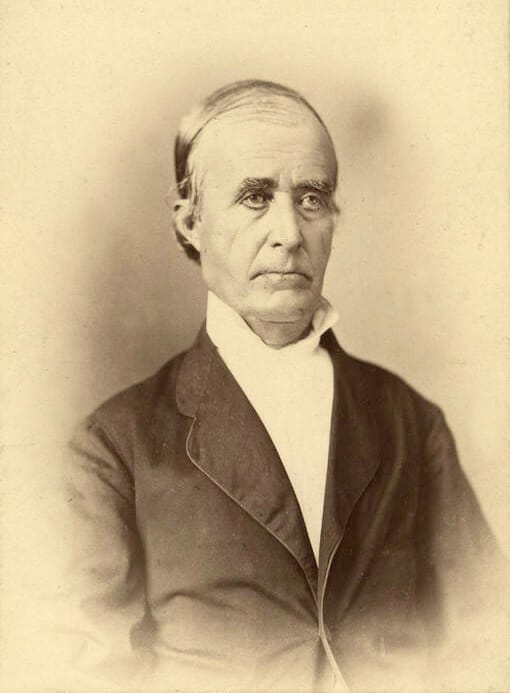Edmund Strother Dargan
Democrat Edmund Strother Dargan (1805-1879) served one term in the U.S. House of Representatives for Alabama’s First Congressional District, from 1845-1847. He later served as chief justice of the Alabama Supreme Court and represented the Mobile district in Alabama‘s 1861 Secession Convention, where he supported the ordinances of secession. He later served the first Congress of the Confederate States of America as a member of its House of Representatives for two years before once again retiring to Mobile, Mobile County. In addition to his political service, he also ran a successful private law practice in Mobile. He is sometimes referred to as Edmund Spann Dargan and even Edmund Spawn Dargan in an older source.
Dargan was born near Wadesboro, North Carolina, on April 15, 1805, to a Baptist minister of Irish descent whom sources do not name and a woman named Lilly. He had no siblings. Dargan’s father died when he was young, leaving him without the money to pursue a formal education. He taught himself English, Latin, and Greek, however, and this knowledge would later allow him to pursue legal studies. He initially worked as a farm laborer, but in 1827, he began studying law in Wadesboro under the tutelage of Col. Joseph Pickett. After completing his studies, Dargan moved to Alabama in 1829 and taught private school in Washington, Autauga County, for three months. He briefly practiced law in Autauga County and also served as Justice of the Peace. In 1833, Dargan moved to Montgomery County and then in 1841 moved to Mobile. At some point, likely in the latter 1830s, he married Roxana Brock of Georgia, with whom he would have four children.
Dargan was elected judge of the Mobile circuit court in 1841 and for one year. In 1844, he was elected mayor of Mobile and to the Alabama State Senate, but he resigned the latter position after a year to enter the congressional race to replace James Dellet. He defeated Whig William D. Dunn, a prominent politician, and served in the U.S. House of Representatives from 1845 to 1847. In February 1846, Dargan gained notice for a speech during the dispute with Great Britain over the boundary between the Oregon Territory and present-day Canada. He advocated for the eventual 49th parallel as the northern U.S. boundary and against the contentious 50° 40′ line that was popular among American expansionists. Dargan also expressed a willingness to use force should Great Britain resist, though unbeknown to him, British officials had been internally willing to comply with that position. After his term, Dargan did not seek re-nomination, and his open seat was taken by former governor and Alabama Supreme Court justice John Gayle. In December 1847, he was chosen to serve as a justice on the Alabama Supreme Court. He became chief justice in 1849 when Henry Watkins Collier resigned. Dargan was the first chief justice to preside over a five-judge court. In 1852, he resigned as chief justice and resumed his private law practice in Mobile.
In 1860, Dargan returned to political life when he was elected as the Mobile delegate to Alabama’s secession convention. This referendum was required by the legislature’s 1859 resolution passed in the eventuality a Republican was elected to the presidency. At the convention, Dargan argued and voted for secession from the Union. Dargan was then elected to serve in the Confederate House of Representatives from February 1862 until February 1864. Dargan did not seek reelection and permanently retired from political life, choosing to devote his time to his law practice. He practiced law until his death on November 22, 1879; he was interred in Magnolia Cemetery in Mobile.
Further Reading
- Denman, Clarence Phillips. The Secession Movement in Alabama. Norwood, Mass.: Norwood Press, 1933.






